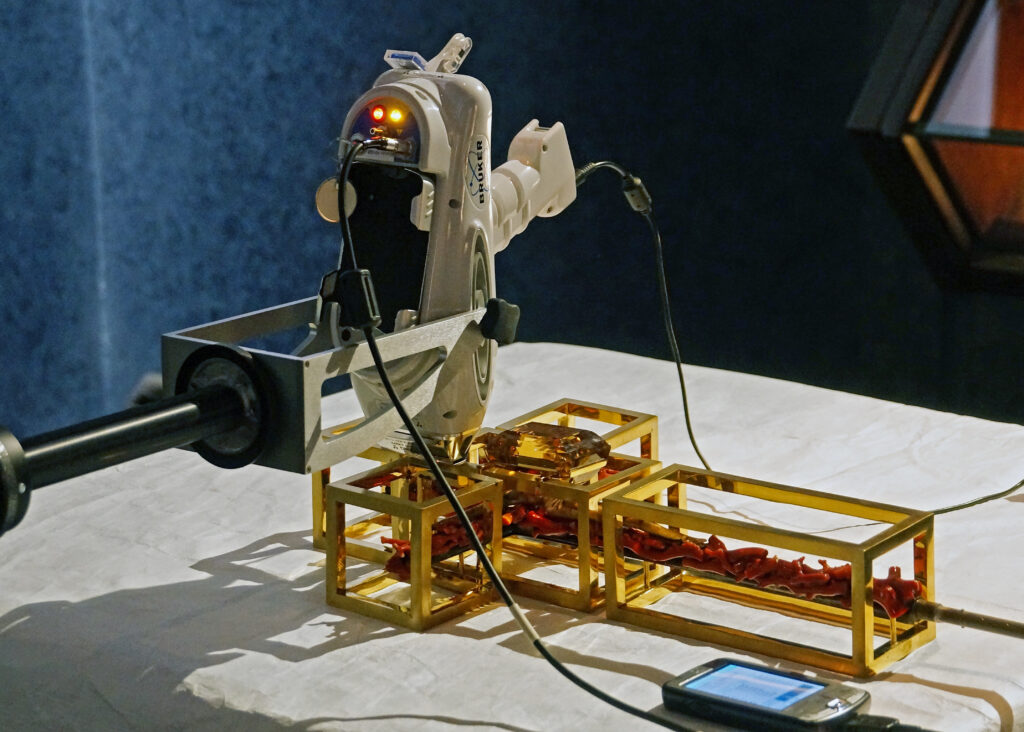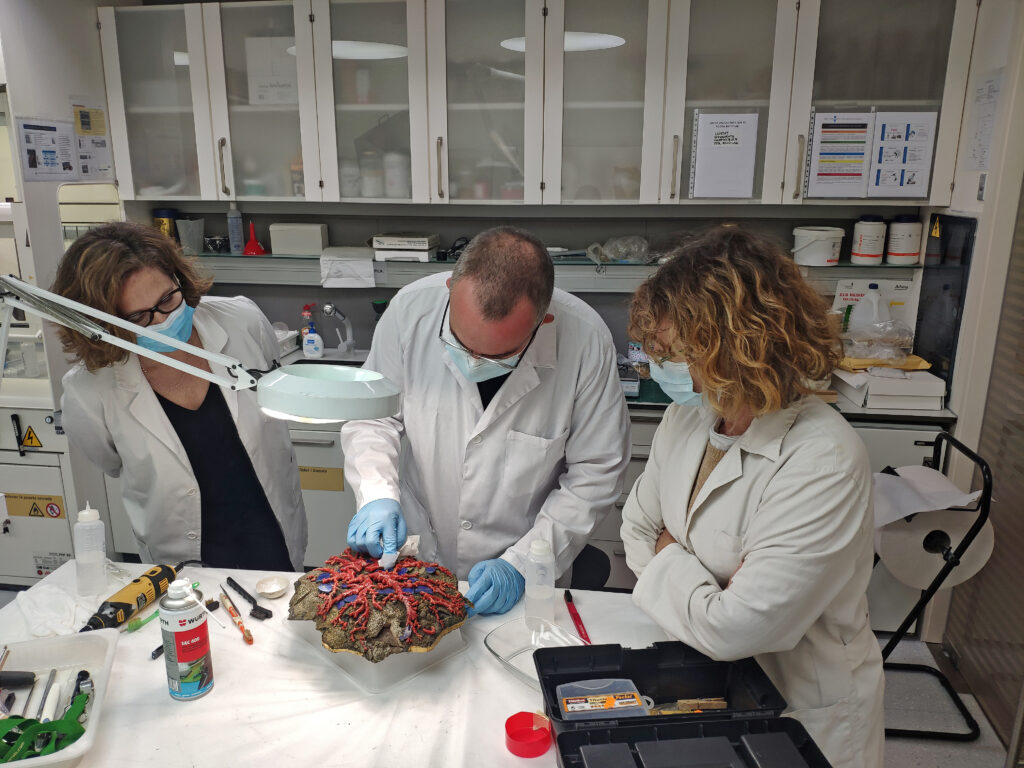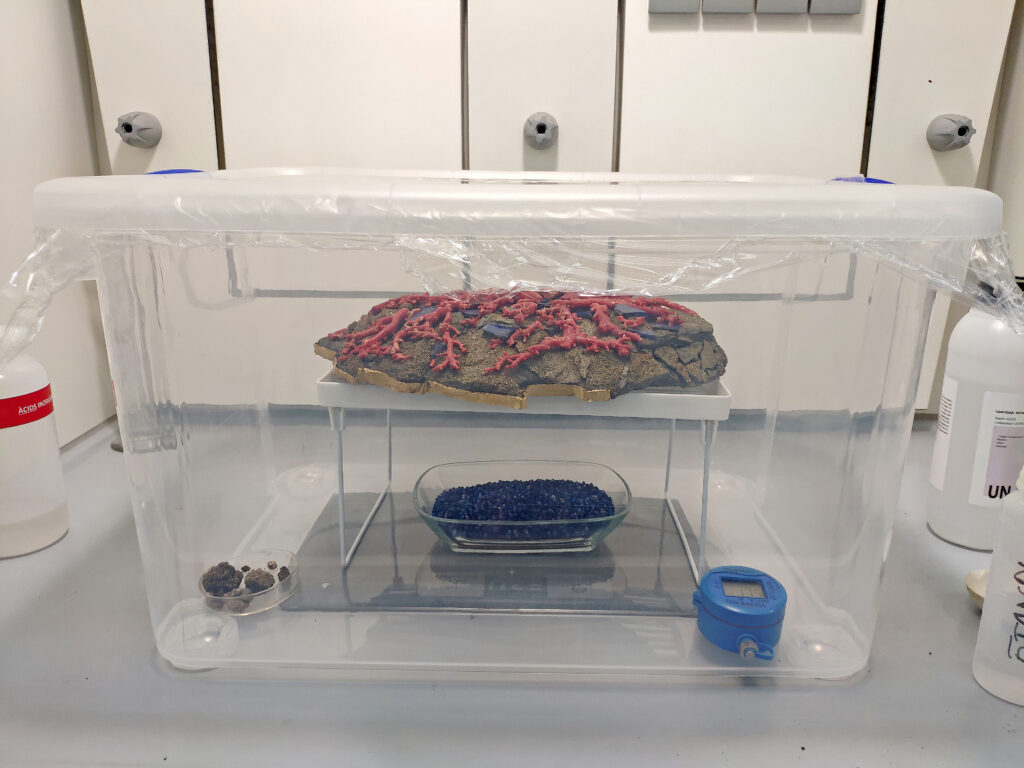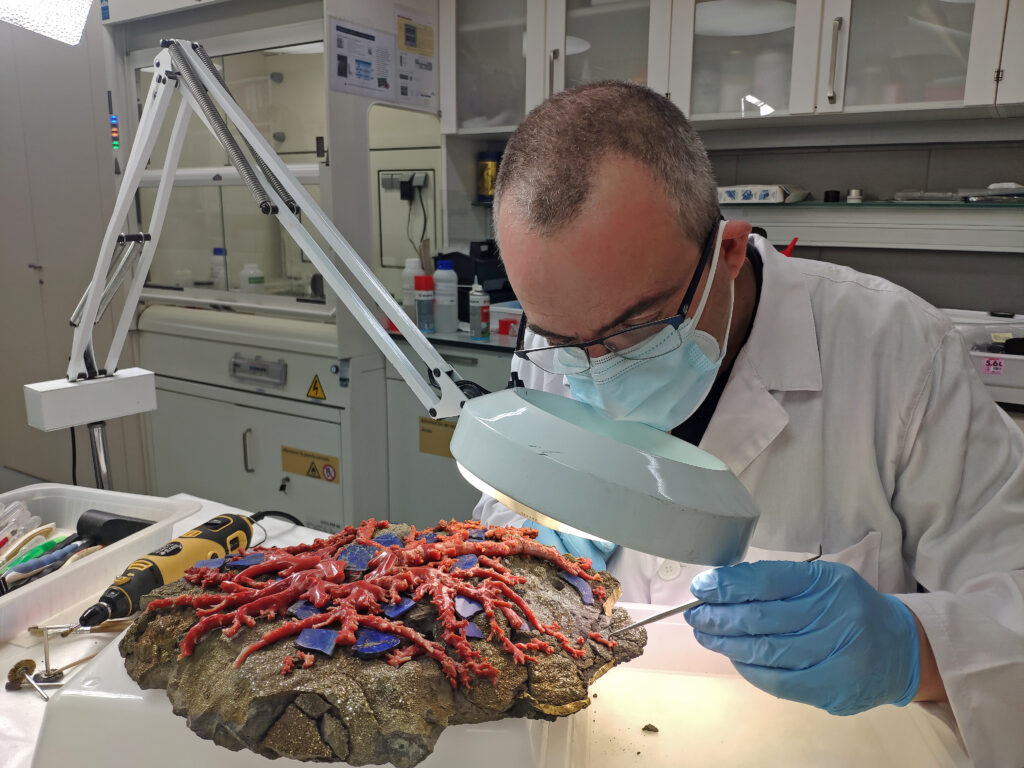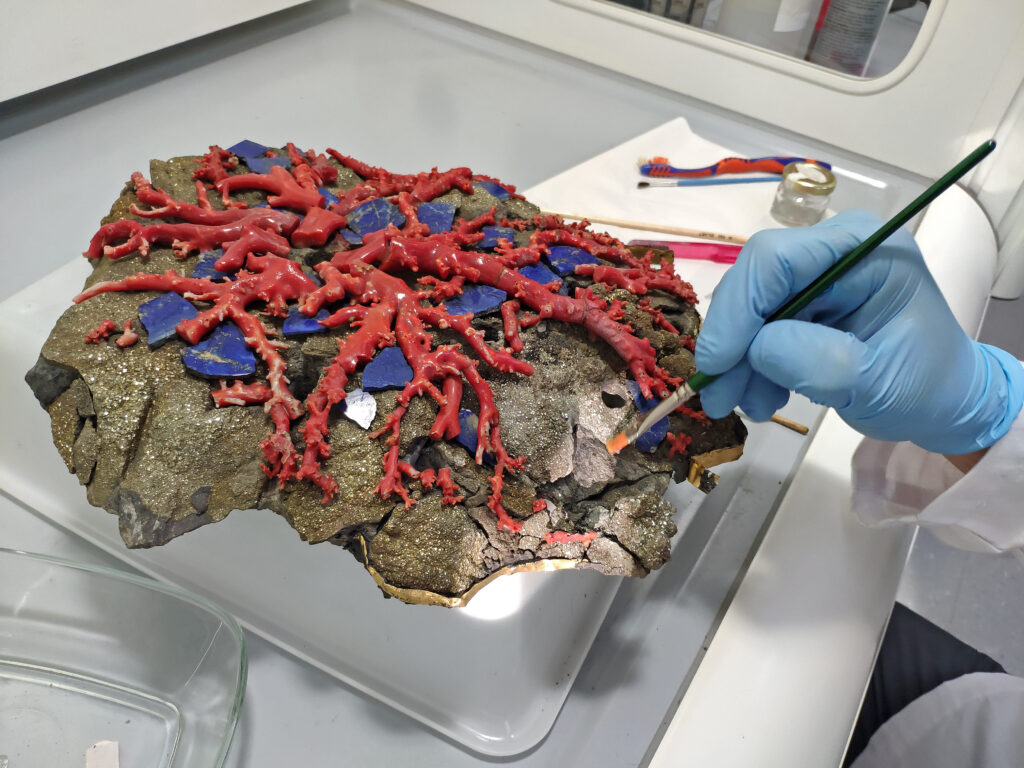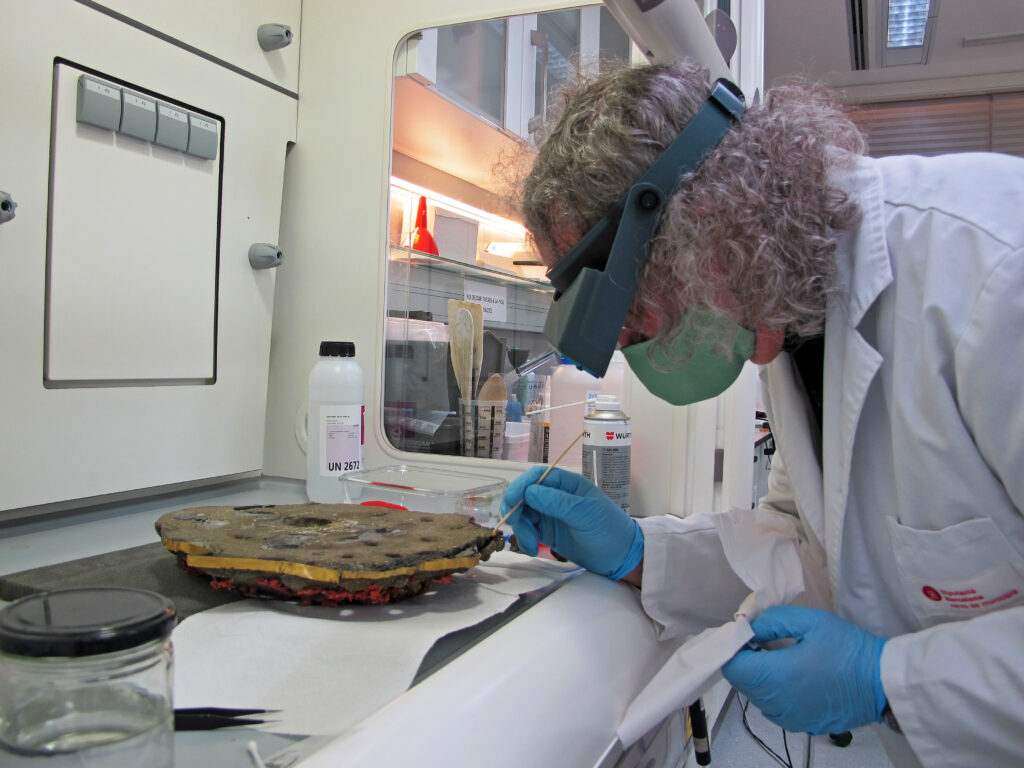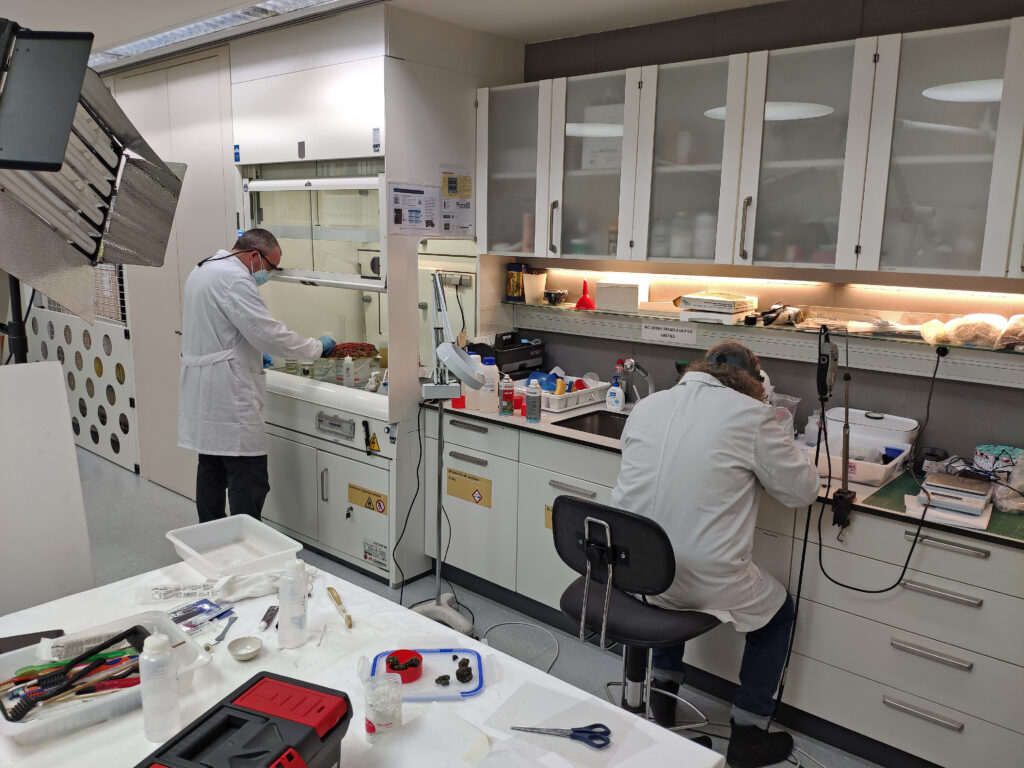The jewel The Angel Cross is part of the jewellery collection that the Gala-Salvador Dalí Foundation incorporated into its holdings in 2001. The collection has since been restored and can now once again be visited in its entirety in the Dalí·Jewels annex of the Dalí Theatre-Museum.
In Dalí’s own words, it is also the most ambitious of all the jewels and represents a treatise on existence, the gradual transformation of the mineral world into the angel. In this sense, the rhythm of the thorns refers to the animal world. The mineral world is represented by the lapis lazuli sphere, the plant world, by the coral, and the spiritual world and mankind, by the figure of the cross. The sculpture is built on the symbolism of the number twelve, represented by the twelve thorns, a symbol of the twelve apostles, the twelve tribes of Israel or the twelve gates of the New Jerusalem.
The mineral at the base of the jewel had begun to degrade. Several actions were undertaken to address the problem, including:
- Observation of the piece and study of the possible causes by the gemmology, jewellery and mineralogy specialists Noa Florensa, Montserrat Bagué and Josep M. Serrano.
- X-ray fluorescence analysis of the composition of the materials, performed by Jordi Ibáñez and Soledad Alvarez from the X-ray Diffraction Service at Geosciences Barcelona (GEO3BCN-CSIC).
- Verification of the cause of the damage: sample analysis to determine whether the damage was due to the presence of bacteria, performed by Joan Gutiérrez, a doctoral student at the University of Barcelona’s Faculty of Geology, in collaboration with the biologist Magdalena Brasas.
- Restoration of the jewel’s base by the mineral specialist Mr Joan Rosell, in collaboration with Noa Florensa.
- Preventive conservation. Once it had been determined that the damage to the base of the jewel was due to an increase in humidity, the Conservation and Restoration Department fine-tuned the display case where it is permanently exhibited to ensure a relative humidity of 30%, the ideal percentage for the piece’s proper conservation. This work was done by a team of specialists from the Foundation and from SIT.
The conservation and restoration tasks were thus a joint effort by specialists from a variety of fields, whom we thank for their work and availability.
